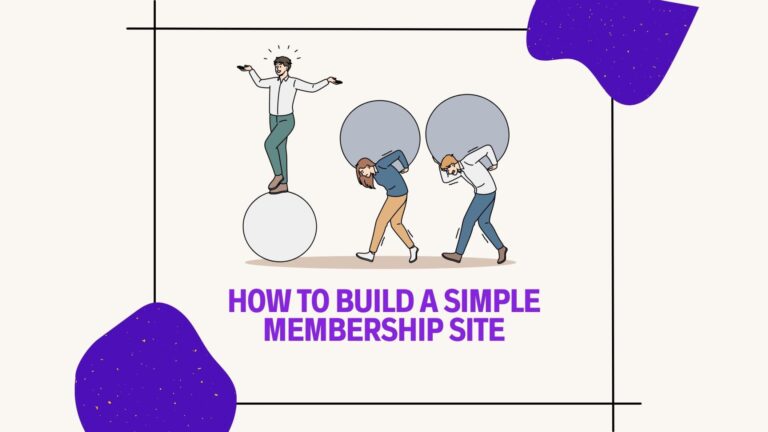The term “member directory” might sound like one of those old-school things you don’t hear about much anymore. If you imagine tall cabinets filled with paper cards and folders, then you might think a member directory isn’t necessary for the digital age.
But while the physical concept of a membership directory may no longer exist (in most cases at least), the need for a centralized record of members is still very much alive.
What does an online member directory look like these days? Why would you build one? And how to do it?
We’ll answer all these questions (and more) in this article. Read on to get the skinny on building a successful member directory.
What Is a Member Directory?
So, what exactly is a member directory? A member directory is an online list of members in an organization that provides basic information about each individual. This information can include name, contact information, email addresses, titles, expertise, interests, and more. Member directories can be used for networking purposes and provide potential members with an easy way to learn about the organization and its people.
Furthermore, member directories are sometimes a way to provide the public with information. For example, the Better Business Bureau uses a directory to provide customers with information about local businesses so they can make informed decisions.
Why Should You Build a Member Directory?
Building a member directory can be beneficial in many ways. It can help you:
Be More Transparent
A member directory can be a great way to provide potential members with more information about your organization. It also shows new or potential customers that you are open and honest about who is part of your group.
Build a Community
Member directories are, essentially, membership sites. By all intents and purposes, they are a great way to foster relationships between members and build stronger community ties. This can help you grow your online presence (and eventually monetize it with paywall content, merchandise, and so on.)
Network and Connect with Other Businesses
This is, in fact, one of the core purposes of a member directory. They can help you find new business contacts and connections, which can be extremely beneficial in the long run.
Showcase Your Expertise
Want to gain more authority in your field? Joining a member directory can help you do just that. It can give you the opportunity to showcase your work, skills, and knowledge and get recognition from industry leaders.
Want to level up and be perceived as one of the ultimate authorities in your niche? Build your own member directory and attract the best talent in your field.
Help Members Grow Their Businesses
…And grow yours in the process too. Member directories are a great meeting point for demand and supply. It helps members promote their products, services, and expertise, as well as creates new opportunities for collaboration.
Types of Member Directories (and Examples)
Not all member directories are created the same.
OK, that might be a bit of an overstatement. Most member directories are quite similar in terms of structure. In essence, they all provide basic information about members and their roles in the organization, as well as contact details.
However, depending on the specific purpose of a member directory, it might show slightly different characteristics. Some of the most common types of member directories include:
Professional Associations
These are often used by industry organizations or associations to show the expertise of their members. Union and trade associations are sometimes included in the same “professional member directory” category. For example, the American Bar Association offers a comprehensive list of lawyers and law firms.
Business Directories
These feature information about businesses in a certain sector or geographic area. They are very useful for customers looking for local services. Some examples here include Yelp, TripAdvisor, and the Better Business Bureau.
Alumni Directories
These are often used by colleges and universities to keep track of all their alumni. These member directories normally include information about the students’ degrees and studies as well as their contact details. A good example is the (very aptly named) Harvard Alumni Directory, where you can look up the people who graduated from Harvard.
Chambers of Commerce
These are used by business organizations to list their members and the businesses in their area. For example, The US Chamber of Commerce offers a comprehensive list of all the businesses in its database.
It is worth noting that these are some of the most common types of member directories — but not all. Essentially, member directories can take as many shapes as industries and niches there are.
How to Build a WordPress Member Directory
The easiest way to build a member directory is through a WordPress website. Essentially, you will need:
- A domain name
- Hosting
- A WordPress site (the most basic ones can be built without coding)
- A membership site plugin (such as Ultimate Membership Pro) Additionally, you might also want to add pricing levels to your member directory (e.g. you could allow members to chat with each other or see their full profile, depending on their membership level).
Once you have all the pieces, you can start adding members to your directory and setting up the design. You can also create custom pages for each member and add additional features such as pictures, videos, and links to their websites and social media profiles so that visitors can get a more vibrant idea of who you are as an organization.

What Information to Include in a Member Directory
Every type of member directory has a different information structure. For example, a professional association directory might include a member’s qualifications, while an alumni directory might include details about the courses they took.
A Chamber of Commerce member directory will include just contact information (and often from just one or two representatives of each business). But at the same time, a business directory opened to the public (such as the Better Business Bureau) might include other types of data, such as credibility scores or reviews, both from members and customers.
Whatever type of member directory you want to build, though, there are some elements you should include in any type of member directory:
- Name
- Picture
- Contact information
- Professional qualifications or accreditations/ specializations/ courses they took
- Links to their website and social media profiles
Top 5 Ways to Promote Your WordPress Member Directory
Say you’ve already set up your member directory. And while the website might look great (and function just as well), there’s one small problem: a member directory isn’t much without…members.
Here are some tips to help you promote your member directory and attract more people to it:
Build a Social Media Strategy
“Don’t build a house on rented land” is sound advice, and it’s especially true with social media. You should always strive to own the conversation, as this allows you to control both the message and the context. And social media isn’t particularly friendly with allowing content creators to actually control…anything.
Basically, if your entire business strategy ends at social media, you need to connect the dots and bring people back to your site, as opposed to relying on social media to build and support your community. Make sure your social media strategy will always circle back to channels you can own: your site and email.
Create and Share Free Content
Have you ever noticed that the most popular content creators on the web tend to give away a lot of their content for free? That’s because it works. People love (and appreciate) getting something for free.
Think of ways to give away free content and resources to help your members and attract new ones. For example, you could produce content guides and tutorials that are relevant to your members, or you could offer discounts and promotions for those who join your directory.
Once you have a solid audience for your free content, you can start to engage members with exclusive content (and draw them towards your membership site.)
Become Part of Other Communities
To attract more people to your member directory or membership site, you should first make sure you’re part of other communities. Of course, you don’t want to spam other places with your links, but it’s important to become an active member of other communities related to your area of expertise. That way, you can share your knowledge, gain people’s trust, and slowly attract them toward your own personal brand (and thus, towards your website too.)
Incentivize People to Share the Word
People love rewards and incentives, so it makes sense to create a referral program with your member directory. That way you can incentivize people to share the word and spread your message. You could offer discounts, free content, or exclusive access to certain areas of your website for each successful referral.
Use Social Proof Wisely
We’re social animals. People like places where other people hang out.
Think of how when you travel, you’re more tempted to stop and eat somewhere if there’s already a line of people waiting for it. It’s even better when you hear someone else raving about the place.
The same applies to any member directory or membership site. You can use customer reviews, or success stories to show people what other members have achieved with your directory, and encourage them to join in. Sure, no one likes a (humble)brag, but using social proof smartly can help you grow your audience.
Member Directories: Conclusion
In short, member directories aren’t dead. They’re alive and well, but have taken more advanced forms. They’re a great way to build, grow, and monetize your community — and building a WordPress member directory is one of the easiest ways to tap into this opportunity. Of course, your work won’t end when the site’s published (as promoting your directory is crucial) — but all in all, WordPress (and a good community plugin) can give you a solid base from which you can launch your success.
You May Also Like
Community Membership Sites Are Thriving. Here’s How to Build Yours
Build a Membership App to Maximize Your Content’s Potential & Earn More with Your Community




